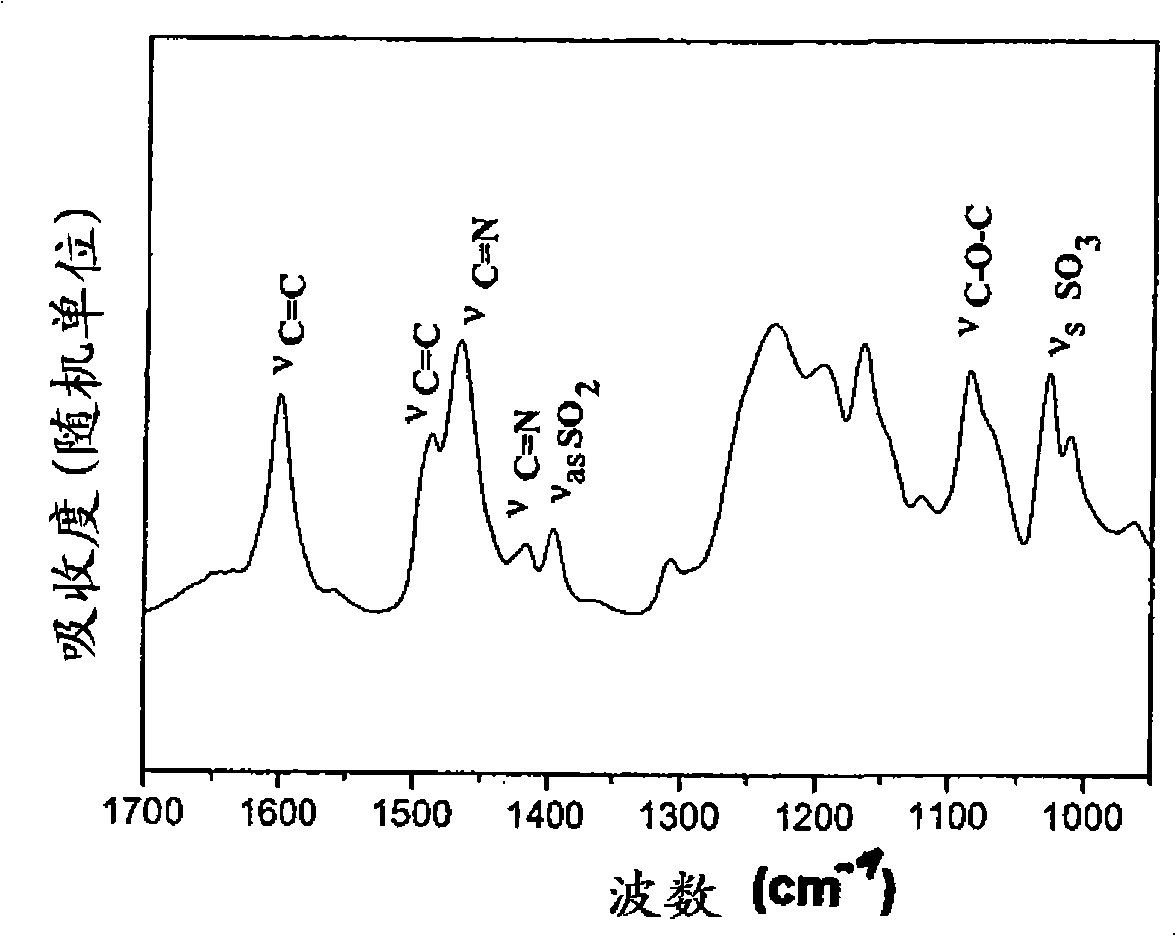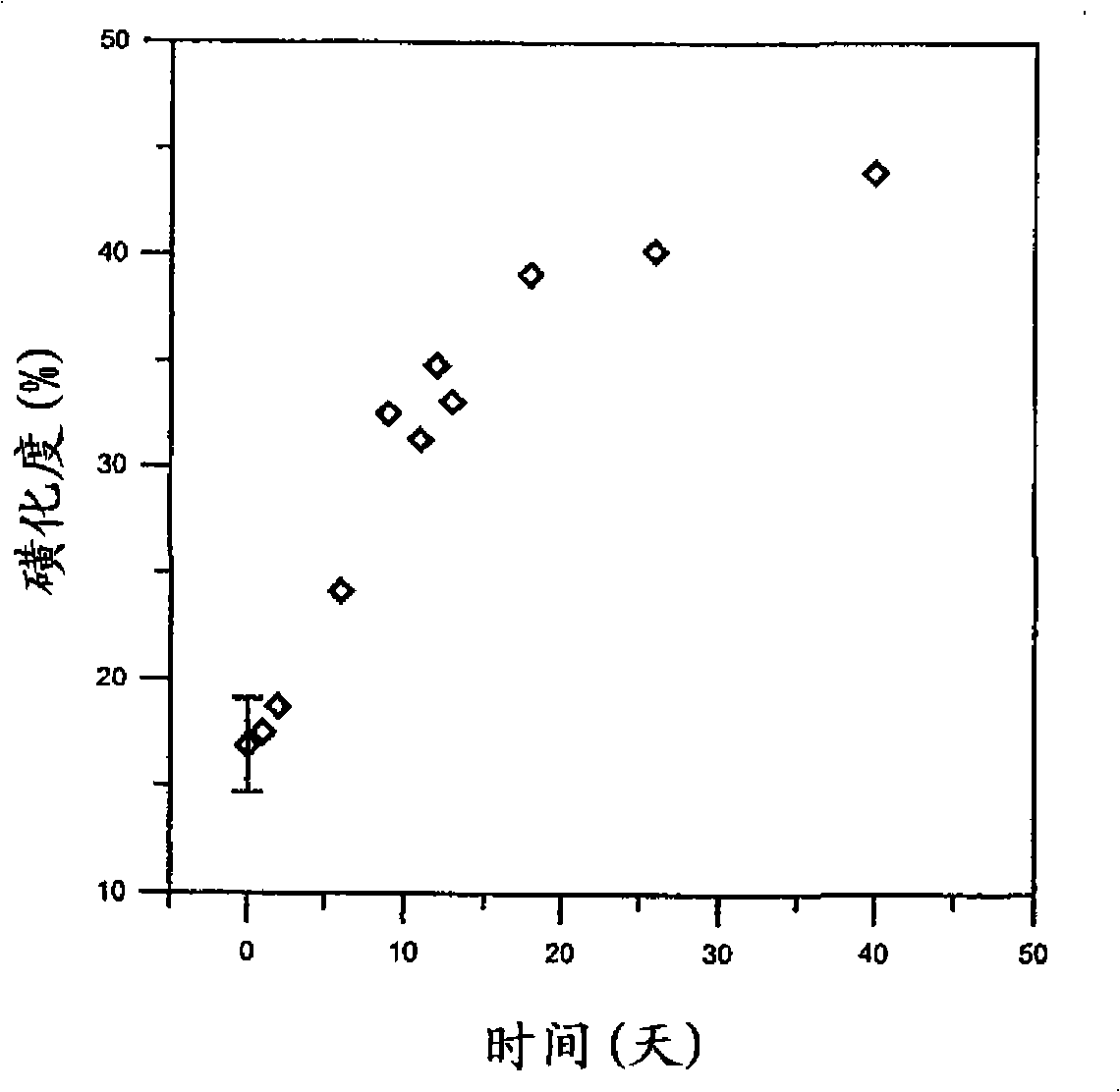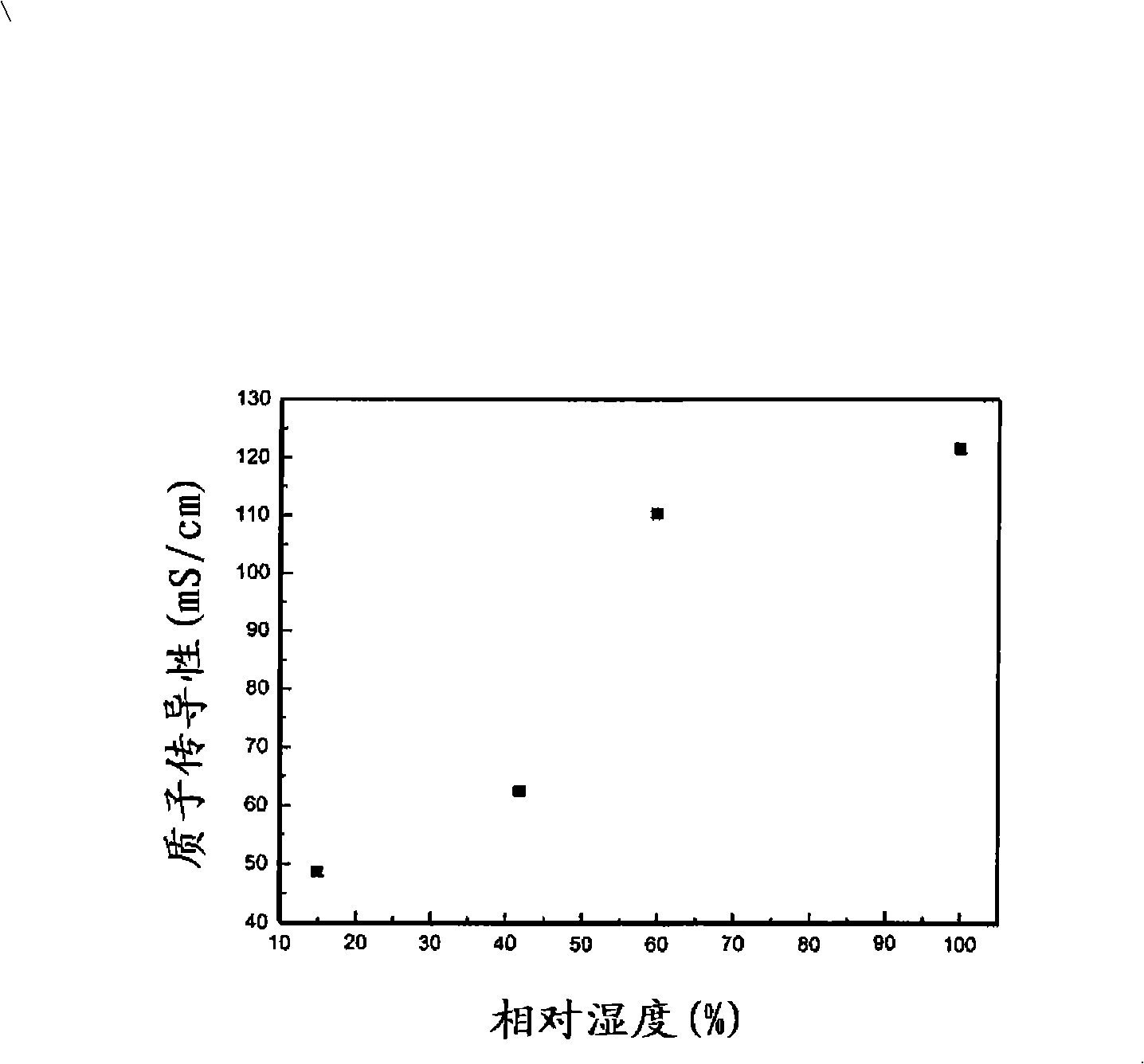Method for manufacturing a sulfonated poly(1,3,4-oxadiazol) polymer
A technology of polymer and oxadiazole, applied in the field of preparing sulfonated polypolymer, can solve the problems of high cost and reduced proton conductivity, and achieve the effects of good mechanical properties and high proton conductivity
- Summary
- Abstract
- Description
- Claims
- Application Information
AI Technical Summary
Problems solved by technology
Method used
Image
Examples
Embodiment 1
[0062] Synthesis of Sulfonated Poly(1,3,4-oxadiazole)
[0063] direct synthesis
[0064] First, polyphosphoric acid (PPA) was added to the flask and heated to 100°C under a dry nitrogen atmosphere, then hydrazine sulfate salt (HS, >99%, Aldrich) was added to the polyphosphoric acid, homogenized by stirring and heating the reaction medium qualitative.
[0065] After reaching the reaction temperature, Dicarboxyldiazid 4,4'-diphenyl ether, DPE (99%, Aldrich) was added to the flask. The molar dilution ratio (PPA / HS) and molar monomer ratio (HS / DPE) were kept constant at 10 or 1.2. The molar dilution ratio (PPA / HS) and molar monomer ratio (HS / DPE) were chosen based on previous studies to optimize poly(ether-1,3,4-oxadiazole) synthesis with the aid of statistical experimental design (Gomes et al., 2001, supra).
[0066] After 6 hours of reaction of DPE and HS, the reaction medium was added to water containing 5% w / v sodium hydroxide (99%, Vetec) to allow precipitation of the pol...
Embodiment 2
[0084] Water Absorption and Oxidation Stability
[0085] The film was dried at 80° C. in vacuum for 24 hours before measurement. After measuring the weight of the dried film, the samples were immersed in deionized water at 25°C and 60°C for 24 hours.
[0086] Before measuring the weight of the hydrated membrane, wipe off the water from the surface of the membrane with a paper towel. Water absorption is calculated according to the following formula:
[0087] Water absorption (weight%) = (m 湿 -m 干燥 ) / m 干燥 x100,
[0088] where m 湿 and m 干燥 are the dry and hydrated film weights.
[0089] The oxidative stability of the membrane was investigated, wherein the membrane was subjected to Fenton's reagent (containing 2ppm FeSO 4 3% H 2 o 2 ) at 80°C for 1 hour. The results are shown in Table 1.
[0090] Table 1: Water absorption and oxidation stability of sulfonated poly(1,3,4-oxadiazole) membranes
[0091]
[0092] aAccording to elemental analysis
[0093] b Data from ...
Embodiment 3
[0100] Measurement of proton conductivity
[0101] Proton conductivity by frequency between 10 and 10 6 Impedance spectra between Hz are measured with signal amplitudes ≤ 100 mV and determined from the impedance modulus at the high frequency side where the phase shift disappears. The proton conductivity of the samples was measured at 80°C and 15% to 100% relative humidity. Impedance measurements were performed on stacks of up to 5 films, where each stack had a similar overall thickness of about 500 μm. The relative humidity is controlled by blowing nitrogen through the water, heating the water at a suitable temperature between 20°C and 80°C.
[0102] image 3 The proton conductivity of sulfonated poly(1,3,4-oxadiazole) membranes is plotted as a function of temperature. The film has S / C = 0.124, measured at 80°C and 15% to 100% relative humidity.
[0103] image 3 It was shown that a high proton conductivity is achieved, which can be explained inter alia by the structure ...
PUM
| Property | Measurement | Unit |
|---|---|---|
| thickness | aaaaa | aaaaa |
Abstract
Description
Claims
Application Information
 Login to View More
Login to View More - R&D
- Intellectual Property
- Life Sciences
- Materials
- Tech Scout
- Unparalleled Data Quality
- Higher Quality Content
- 60% Fewer Hallucinations
Browse by: Latest US Patents, China's latest patents, Technical Efficacy Thesaurus, Application Domain, Technology Topic, Popular Technical Reports.
© 2025 PatSnap. All rights reserved.Legal|Privacy policy|Modern Slavery Act Transparency Statement|Sitemap|About US| Contact US: help@patsnap.com



